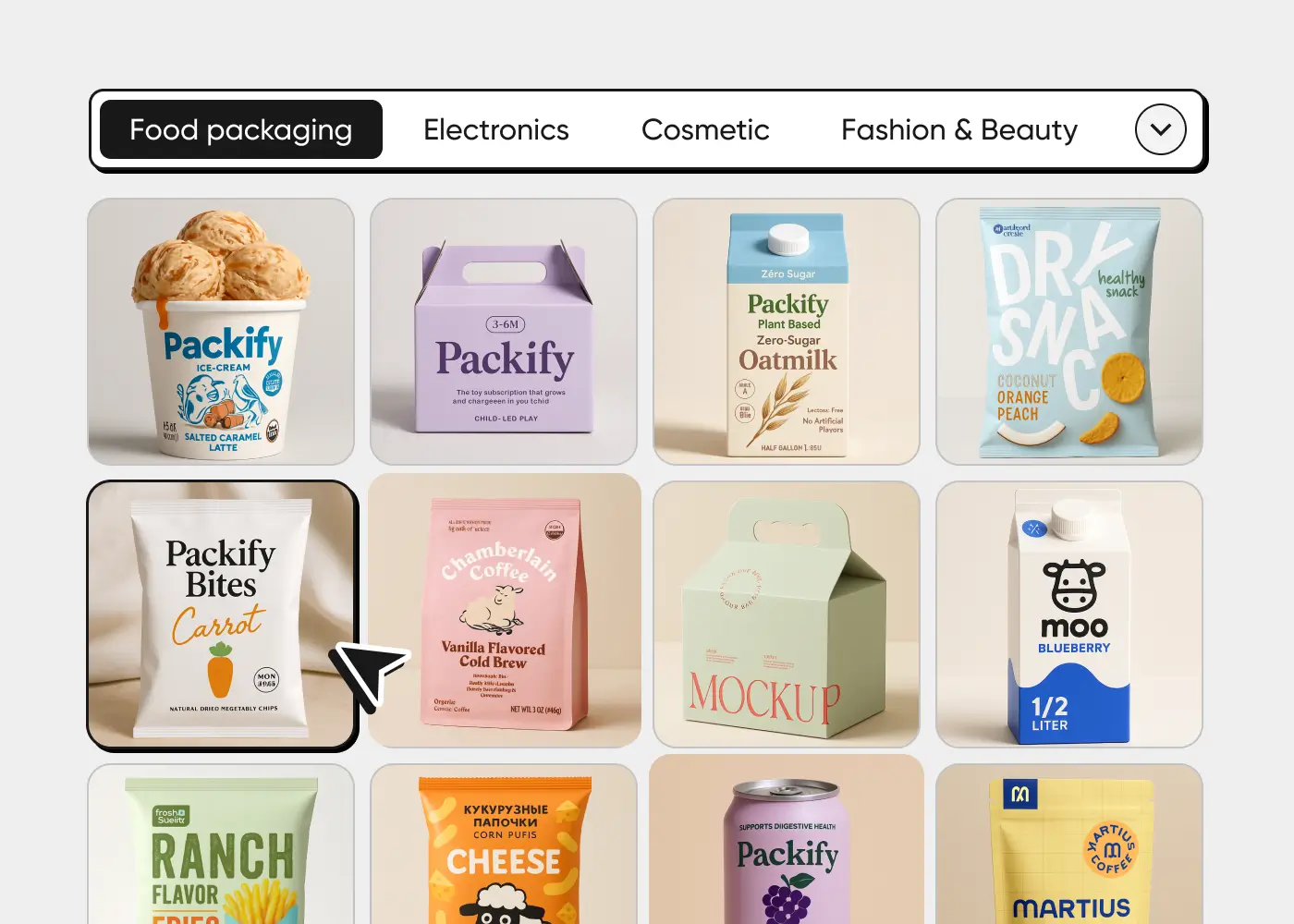Packify.ai: Complete Buyer's Guide
Transforms packaging design through conversational AI
Packify.ai transforms packaging design through conversational AI, enabling brands to generate production-ready packaging concepts from simple text prompts in under 3 minutes.
Market Position & Maturity
Market Standing
Packify.ai occupies a strategic position in the emerging 'specialized tools' market segment, competing between basic design platforms and comprehensive enterprise suites within the rapidly expanding AI packaging design market projected to reach $6.47 billion by 2034 [40][47].
Company Maturity
Growth-stage positioning, though public funding disclosures remain limited [55][56].
Growth Trajectory
Demonstrates operational capability through documented customer implementations and measurable outcomes, with testimonials showing 20% sales increases [41][42] and 40% cost reductions [41][55].
Industry Recognition
Limited in available research, with customer testimonials providing primary evidence of platform effectiveness rather than analyst recognition or industry awards.
Strategic Partnerships
API integration capabilities with PLM systems like Esko [53][56], though most customers operate Packify.ai as a standalone solution.
Longevity Assessment
Vendor stability assessment requires consideration of limited public financial disclosures and dependence on continued platform development [53][56].
Proof of Capabilities
Customer Evidence
Cosmetics brand owner Jamie L. reported 'sales rose 20% post-redesign' following Packify.ai implementation [41][42]. Food startup founder Bia Bis achieved 40% reduction in e-commerce launch costs through AI photoshoot features [41][55].
Quantified Outcomes
Performance validation shows consistent time compression benefits, with users generating initial design concepts in under 3 minutes [46][52] compared to traditional workflows requiring 3-6 weeks per project [47][50].
Case Study Analysis
A cosmetics brand case study highlights achieving cohesive SKU packaging across multiple product lines using Packify.ai's style-consistency feature [39][44].
Market Validation
Customer base concentration in SMB cosmetics and food/beverage segments [39][44][55], with some mid-market enterprise pilots [55].
Competitive Wins
Documented wins in e-commerce packaging applications where AI-generated mockups reduce photoshoot costs [41][57].
Reference Customers
Pro tier's 200 designs per month capacity effectively serves most SMB requirements [54][56].
AI Technology
Packify.ai's conversational AI architecture interprets natural language prompts and generates production-ready packaging files through sophisticated prompt-to-design algorithms [41][42].
Architecture
Cloud-based infrastructure requiring minimal client-side resources, with no coding requirements simplifying technical adoption [53][56].
Primary Competitors
Pacdora, Kittl AI, Adobe Express, Midjourney [43][46][53].
Competitive Advantages
Implementation simplicity with chat-first design approach eliminating complex interface navigation required by alternatives like Pacdora or Adobe Express [46][53].
Market Positioning
Increasing market segmentation, with chat-based simplicity (Packify.ai) competing against multi-agent complexity (Akira AI) and comprehensive creative suites (Adobe) [26][53][55].
Win/Loss Scenarios
Favor Packify.ai for organizations prioritizing implementation simplicity and rapid deployment [46][52].
Key Features

Pros & Cons
Use Cases
Integrations
Pricing
Featured In Articles
Comprehensive analysis of AI Packaging Design Tools for AI Design for AI Design professionals. Expert evaluation of features, pricing, and implementation.
How We Researched This Guide
About This Guide: This comprehensive analysis is based on extensive competitive intelligence and real-world implementation data from leading AI vendors. StayModern updates this guide quarterly to reflect market developments and vendor performance changes.
57+ verified sources per analysis including official documentation, customer reviews, analyst reports, and industry publications.
- • Vendor documentation & whitepapers
- • Customer testimonials & case studies
- • Third-party analyst assessments
- • Industry benchmarking reports
Standardized assessment framework across 8 key dimensions for objective comparison.
- • Technology capabilities & architecture
- • Market position & customer evidence
- • Implementation experience & support
- • Pricing value & competitive position
Research is refreshed every 90 days to capture market changes and new vendor capabilities.
- • New product releases & features
- • Market positioning changes
- • Customer feedback integration
- • Competitive landscape shifts
Every claim is source-linked with direct citations to original materials for verification.
- • Clickable citation links
- • Original source attribution
- • Date stamps for currency
- • Quality score validation
Analysis follows systematic research protocols with consistent evaluation frameworks.
- • Standardized assessment criteria
- • Multi-source verification process
- • Consistent evaluation methodology
- • Quality assurance protocols
Buyer-focused analysis with transparent methodology and factual accuracy commitment.
- • Objective comparative analysis
- • Transparent research methodology
- • Factual accuracy commitment
- • Continuous quality improvement
Quality Commitment: If you find any inaccuracies in our analysis on this page, please contact us at research@staymodern.ai. We're committed to maintaining the highest standards of research integrity and will investigate and correct any issues promptly.